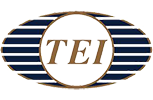Selective Plating FAQ’s
- Navy & Marine
- Aircraft & Aerospace Industries
- Printing Industries
- Electrical & Electronic Industry
- General Engineering including mould and die making.
- Portability
- Ease of operation
- Rapid metal build up
- Disassemble of machines
- Plating of larger parts that won’t fit in a tank
- Excellent adhesion
- Dense coatings
- No thermal distortion
- Minimize hydrogen embrittlement and reduces waste.
Difficulty in plating complex shapes. In most cases only one part at a time.
It is a very labour intensive operation.
Selective plating means that you can selectively plate an area by the means of masking off areas that need not be plated with either masking tapes or masking paints.
Just like painting the material on. The job becomes the canvas or Cathode and the brush is the Anode and the paint is the metal.
Brush plating is approved to many standards.
Brush plating has many of its own approvals and these can be supplied from LDC on request.
Many marine, electrical, aircraft and military bodies approve brush plating.
(Blue folder containing all approvals)
